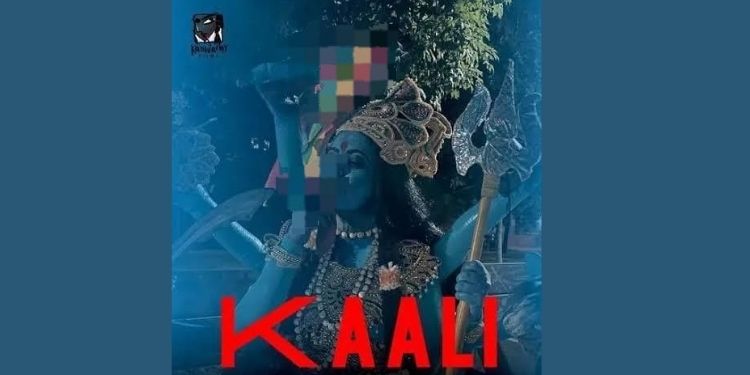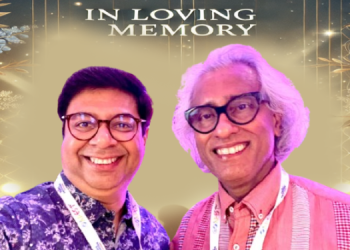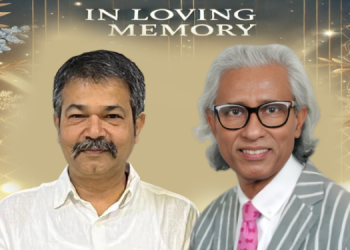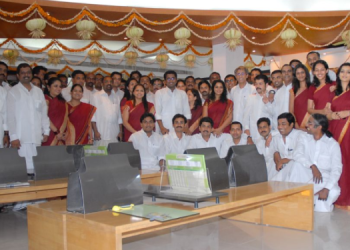Indian filmmaker and actor Leena Manimekalai landed in soup after the latest poster of her documentary ‘Kaali’ showing the goddess smoking and holding an LGBTQ flag is facing backlash for allegedly hurting religious sentiments. The Uttar Pradesh Police have registered an FIR against Manimekalai, besides the films’s associate producer and editor under various sections of the Indian Penal Code (IPC) and two sections of the IT (Amendment) Act 2008.
From allegations of nudity to indecency to hurting religious sentiments, this is not the first-time films in India are facing controversy. Back in 1996, Deepa Mehta’s movie Fire, which explored a homosexual relationship, faced backlash. Fire was passed uncut by the Central Board of Film Certification in May 1998 with a rating of “Adult,” the only condition being that the character Sita’s name be changed to Nita.
In 2017, a Malayalam movie which was named Sexy Durga and won many international accolades was forced to change its name to SDurga. Another movie which invited controversy recently was Sanjay Leela Bhansali’s Indian period drama film Padmavaat. The movie, which was initially named Padmavati, allegedly hurt religious sentiments and led to protests, claiming that the Rajput queen was portrayed in a bad light.
We did not hear of Leena Manimekalai‘s Kaali until the protests on the poster. Will the protests over Kaali’s poster help the film gain more viewers?

N Chandramouli, CEO, TRA Research, believes so. “Many times, controversies attract more attention, rather than detract viewers from it. I am sure that the documentary will gain more viewers across the globe due to this controversy,” he says.
On the response from viewers to such controversies, Shrivastava says, “There has been a mixed response to such films at the box office. Many a time the controversies die down and the films do a lukewarm business. The hype around the film may or may not make it saleable. Titles like Padmavat, Laxmmi (Bomb), S. Durga, and Tandav all have had mixed success at the box office. Too many hyped titles or posters or trailers sometimes fail to live up to the hype and audience expectations.”

“Controversy always attracts attention. Whether this translates into viewership remains to be seen. As a society, we have transformed ourselves into social bullies, waiting for something to erupt on which we can spend mindless hours arguing and abusing,” observes Rajeev Balakrishnan, CEO, Image Advantage Consultants.
He points out that the filmmakers also need to tread the middle path sensibly rather than provoke one section of society like poking the bear. If there is a backlash, then it needs to be taken too, he says.
“As this generation would say, ‘We have no chill.’ Having said that, targeting one community repeatedly to prove a theory of acceptance is also dangerous. Would the film maker have the guts to portray a venerated figure from another minority community in this fashion? The other aspect is that these so-called fringe groups exert their might to show political parties the relevance of their vote share. This normally helps them get one of their activists a seat in the assembly or Lok Sabha polls. The films, of course, get a good initial opening thanks to the protests,” Balakrishnan adds.

“Film posters are made with the objective of garnering eyeballs and creating a buzz before the film’s release. Hence, the entire objective of such a poster being made for the documentary was to create noise, and it has been successful in doing so. Although Leena has been active in the film industry since 2003 – this is her biggest claim to fame in the two decades of her career. She is trending on Google and every other mass media and social media platform today. Am sure not many of us had heard about her or this documentary or any of her work so much as we have heard today. She has the entire country divided on opinions about the poster. While many have come in the support of her creativity and individuality, most believe that religious sentiments shouldn’t be hurt in the process. The Kaali poster controversy however seems a desperate attempt to grab eyeballs and add fuel to the communal tensions especially when they are at an all-time high,” underlines Dr Snehal Shriwastava, Director, Proton Communications.
“While many viewers would be curious to watch the content and understand the context, these kinds of publicity stunts have been practised earlier also by filmmakers to build a buzz around their content”, she adds.

Sumesh RamanKutty, CMO, Augmont Gold, also has an opinion similar to Balakrishnan’s.
He says, “Writers, novelists, artists, and filmmakers have got their freedom to express, but they should also be cognizant of their limits in expressing their freedom.”
“In terms of publicity and promotions for the above said documentary, evidently at zero cost, the filmmaker achieved her objective, which otherwise the filmmaker would have to spend from her account. Of course, there is going to be a definite set of viewers who would watch the documentary after witnessing the chaos and reports on FIRs, media debates, the judiciary’s involvement etc,” he adds.
The marketer notes that such hype could be used to sell the documentary across markets or even secure funding for a feature film which would be more saleable with the maker rising in prominence.
“So, the quality of the content takes a backseat and hype makes the noise. The metrics here are high footfalls due to the sensitive nature of the subject and the publicity. To this end, the filmmaker, with the help of certain liberal and paid writers, procures testimonials for the content. Because it is creative, it is always subjective, and documentary is always free, avid film festival goers and experienced critics will separate the milk from the water. These debates happen, and the intention of the filmmakers gets exposed in most of the cases in forums after the screening. So, viewership for documentaries doesn’t matter much if the content gets sold due to the pre-publicity and media coverage,” Ramankutty explains.

Priya Thuvassery, an independent documentary film maker, says, “Kaali is a performance documentary which was launched this week by Leena Manimekalai. I don’t think Leena was expecting the negative publicity to attract more viewers. She is a fearless artist who has been very open about her politics through her poetry and films for the past decade.”
Thuvassery continues, “Kaali is also holding a camera in her hand. How come we are missing that? It’s a contemporary representation of the Goddess by an artist. And it should be read as an artist’s representation of a goddess. In a way, even the popular image of Kaali is also some artist’s representation at some time, isn’t it? But in a country where Sexy Durga had to be renamed as SDurga, or Angry Indian Goddess, and had to undergo 16 cuts, even this protest is not surprising! But the frightening part is that now the intensity is increasing and artists are threatened not just digitally but also physically.”
From Fire to Padmaavat, what has been the impact of protests on films at the box office?
“Every creative film rendition will have its detractors. Now that we have social media to voice an opinion, it gets magnified. Films that are going to be borderline controversial, either in creative rendition or in historical representation or representing symbols of religion, are closer to controversy than others. However, in my opinion, such controversies only bring more attention to the film, and make more people interested in viewing it at the box office,” says Chandramouli.
“There are movies that have both adverse and advantageous impacts from protests. Movies that face protests after censorship and a few days before release will definitely benefit from the protests. But at the same time, when the protest happens during the production or at any stage of the making of the film, it will definitely affect the movie adversely as the cost of the movie increases. So, the right publicity or communication (right here refers to the apt strategy to promote the product) at the right time can be a factor in defining the box office fate of the film. Eventually, an audience is like any consumer. There have been instances where media publicity and blockbuster behave inversely if the majority of consumers/audience approve the content. No media coverage can help a poorly crafted piece of content. But a good piece of well-crafted content will definitely make its mark even with no publicity. Publicity is more required to get distributors and theatres for the movie,” says Ramankutty.
Thuvaserry is also concerned about how digital abuse crosses the lines and becomes rape threats.
She surmises, “Art has always gained strength when it is suppressed. When there is a war, a disaster or a pain, the artist doesn’t throw her/his pen/brush/camera. They write/ sketch/ sing poems, paintings, and films about the war, the pain and loss. So how can one keep silent when the world is walking backwards, becoming more patriarchal? Leena is an expressive and vocal artist, and she has the freedom to express her thoughts. As an audience, everyone has the freedom to not watch it, or even criticise it. But when it becomes threatening like this, I fear this is not a country for art or artists.”

















